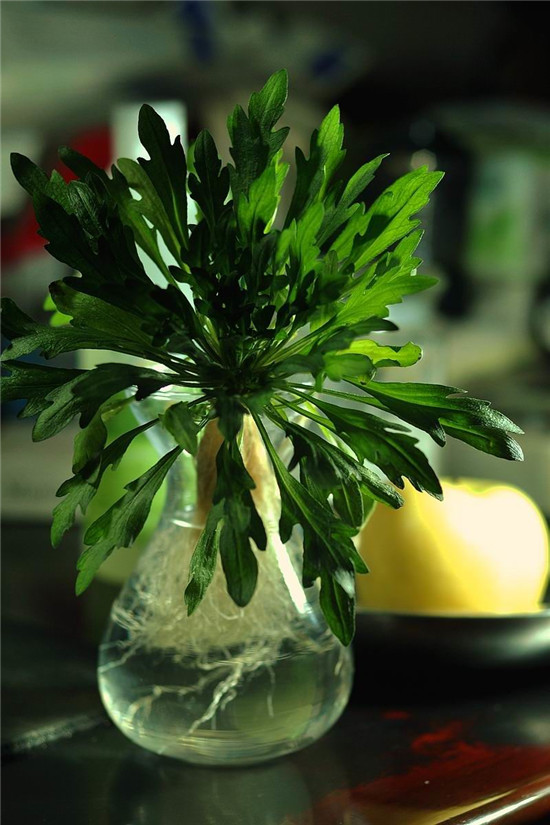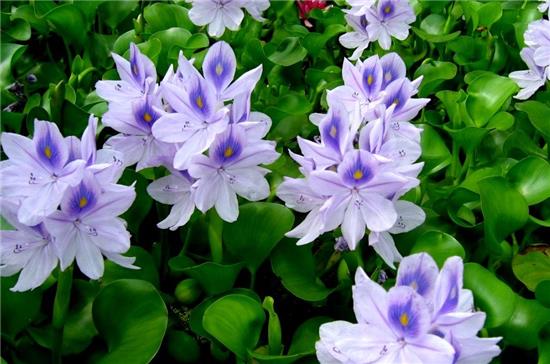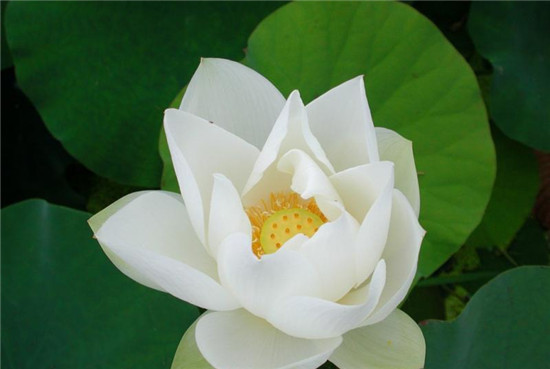Which hydroponic plants are recommended?
Nowadays, many families will plant some plants, whether it is to protect against radiation or to absorb formaldehyde, plants often bring us a good mood. Next, I would like to introduce some hydroponic plants that are easy to grow.

Characteristics of hydroponic plants
Characteristics of hydroponic plants: first, because water can evaporate freely, in the same environment, plants cultivated in potted soil play a more obvious role in regulating air humidity. Second, hydroponic plants can omit the management of basin soil, clean and hygienic, and easy to maintain. Third, if the selection of some roots can be exposed to the light of the plant, coupled with a suitable container, the whole plant can be ornamental, fresh and elegant, with higher ornamental value.
Species of hydroponic plants
Hydroponic plants generally refer to plants that can grow normally in water or water-saturated soil for a long time, such as water lilies, Manjianghong, rice and so on. If it is divided according to the distribution in the water, it can be subdivided into three categories: effluent plants, submerged plants and floating plants. Such as lotus, stone sunflower, lotus and so on. There are many varieties of hydroponic plants. According to the life style of hydroponic plants, they are generally divided into four categories: floating plants, floating plants, submerged plants and hydrophytes.
Cultivation of hydroponic plants
The cultivation of hydroponic plants should be planted according to the habits of different plant species and varieties. There are two different techniques for planting hydroponic plants: one is to build a planting trough at the bottom of the pond and lay it with at least 15 centimeters of thick soil to plant hydroponic plants into the soil; the other is to plant hydroponic species in a container and then sink the container into water. The two methods described above have their own advantages and disadvantages. However, the method of planting hydroponic plants in containers and then sinking into the water is more popular because it is convenient to move. For example, in winter in the north, containers have to be taken out and collected to prevent plants from being attacked by cold; when changing soil, fertilizing and dividing plants in spring, the operation is also more flexible and labor-saving, and this method can keep the pool water clear, and it is more convenient to clean the bottom and change water.
Recommendation of hydroponic plants
Hydroponic plants have well-developed roots and can grow bubbles in water. Domesticated plants that can transform native roots into aquatic roots are tortoise-backed bamboo, Milan, magnolia, camellia, jasmine, rhododendron, golden wood, violet, Phalaenopsis, inverted Admiralty, rubber banyan, Brazilian iron, begonia, ferns, palms, and crab claw orchid, rich bamboo, Brazilian wood, ivy, colored leaf grass and so on.
It is also very important to choose plant varieties. In order to attract consumers, some businesses simply soak the flowers and plants that are not suitable for hydroponic culture in the water, and the life span of such plants must not be long. After seven or eight years of unremitting research and experiments, plant scientists have mastered the domestication and transformation technology of hydroponic flowers and the formula of nutrient solution, and applied for national patents, and entered the publicity period.
Hydroponic plants need to pay attention to the three most important factors for their growth: light, water exchange and fertilization.
Lighting is divided into all-light, semi-negative and shade-tolerant.
Frequency of changing water: change water frequently in summer, every 7 days, slightly longer in spring and autumn, once every 7-10 days, and even longer in winter, once every 10-15 days.
Water-raised flowers rely on the nutrients in tap water is insufficient, need a special nutrient solution, but do not apply too much, otherwise it will lead to fertilizer damage, only in the growing season to increase the frequency of fertilization.

Peacock water hyacinth in the water
There is an obvious bright yellow spot in the center of the petals of Eichhornia crassipes, which is shaped like Phoenix eyes and also like the flower spot at the end of the peacock feather, which is very dazzling and beautiful. Like a peacock in the water, its posture is elegant and noble. Eichhornia crassipes like to grow on sunny, calm water surfaces, or wet and fertile slopes, so they are good aquaculture plants. Therefore, Eichhornia crassipes has the advantages of high ornamental value and convenient breeding.

Elegant water lilies
Water lilies, also known as meridian lilies and water celery flowers, are perennial hydroponic plants. Water lilies are precious flowers in aquatic flowers. The appearance is similar to that of the lotus, except that the leaves and flowers of the lotus protrude to the surface, while the leaves and flowers of the water lily float on the surface. Water lilies are known as "sleeping beauties in flowers" because they roll day and night. Water lilies have a wide range of uses, such as food, tea, cut flowers, medicine and so on. Its ornamental value is also very high, for so many advantages of hydroponic plants, you are moved.

Clear water hibiscus
Lotus has always been a clear water hibiscus, lotus has always been a representative of hydroponic plants. There are many reasons why lotus is loved by people. For example, the moral is very auspicious, and lotus is homophonic with "harmony". Wish the family happiness and happiness for ten thousand years. The lotus is also a symbol of love, because in the early Tang Dynasty, Wang Bo's "picking Lotus Song" shows the steadfastness of love between men and women.
These are all the contents of the hydroponic plants that I have summarized and recommended for you. I hope this article can help you. Please continue to follow us.
Clear water hibiscus
Lotus has always been a clear water hibiscus, lotus has always been a representative of hydroponic plants. There are many reasons why lotus is loved by people. For example, the moral is very auspicious, and lotus is homophonic with "harmony". Wish the family happiness and happiness for ten thousand years. The lotus is also a symbol of love, because in the early Tang Dynasty, Wang Bo's "picking Lotus Song" shows the steadfastness of love between men and women.
These are all the contents of the hydroponic plants that I have summarized and recommended for you. I hope this article can help you. Please continue to follow us.
Related
- Wuhan Hospital Iron Tree Blooming Result Was Instantly Frightened by the Gardener Master
- Which variety of camellia is the most fragrant and best? Which one do you like best?
- What is the small blue coat, the breeding methods and matters needing attention of the succulent plant
- Dormancy time and maintenance management of succulent plants during dormancy
- Minas succulent how to raise, Minas succulent plant pictures
- What are the varieties of winter succulent plants
- How to raise succulent plants in twelve rolls? let's take a look at some experience of breeding twelve rolls.
- Attention should be paid to water control for succulent plants during dormant period (winter and summer)
- Watering experience of twelve rolls of succulent plants
- Techniques for fertilizing succulent plants. An article will let you know how to fertilize succulent plants.



